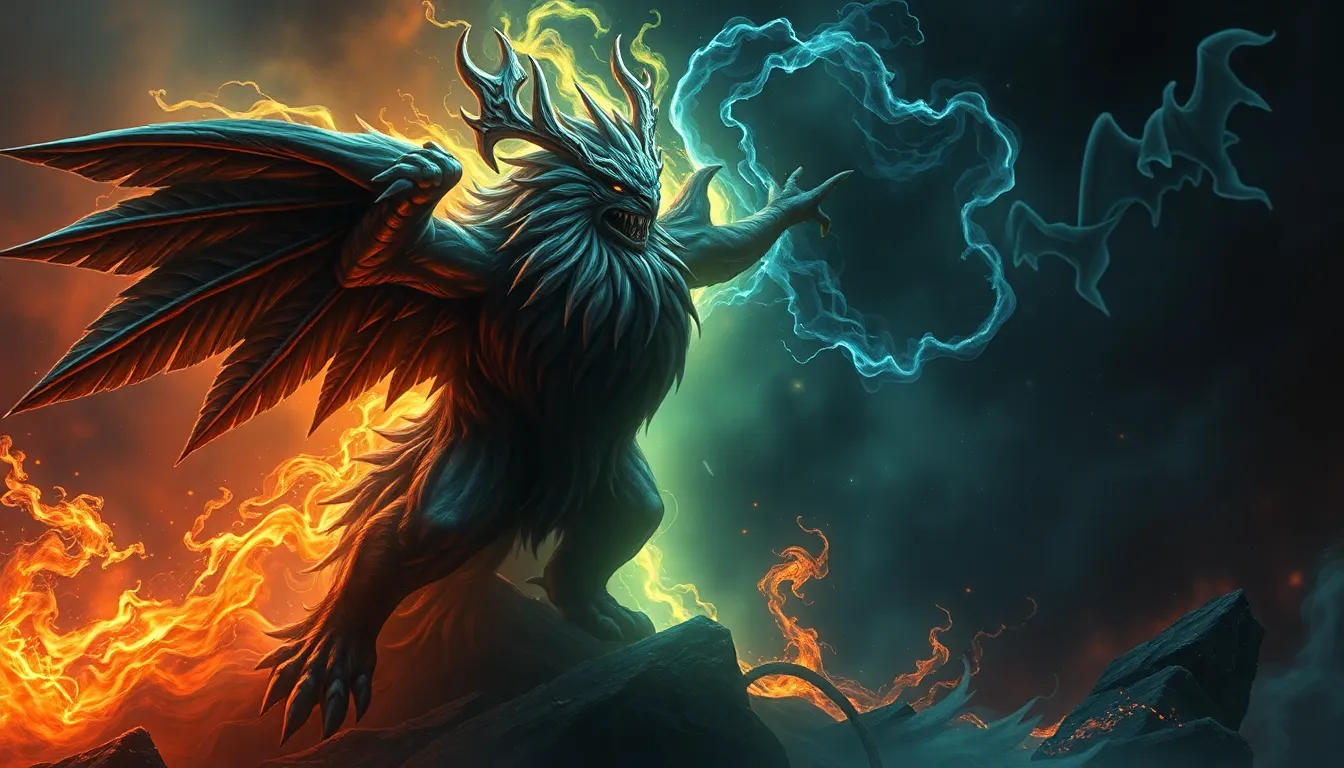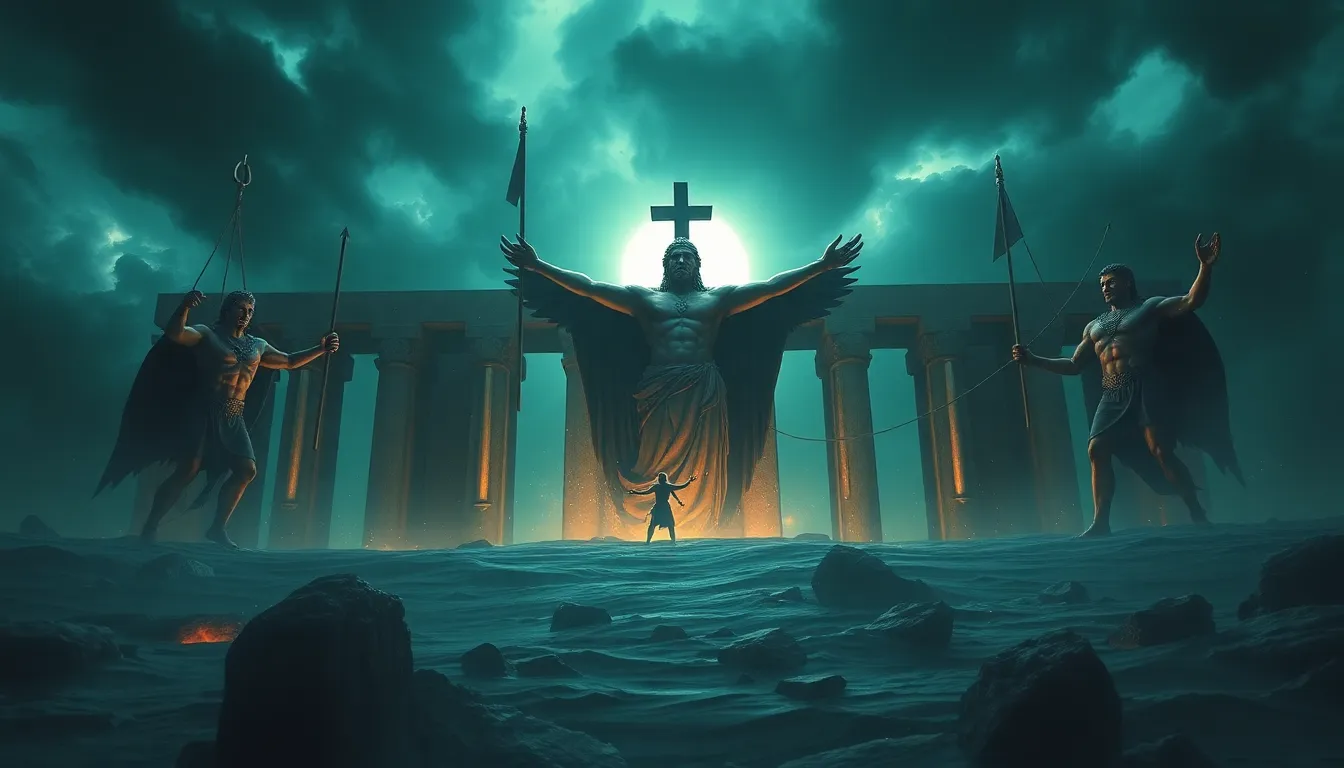Thai Mythology: A Timeless Influence on Modern Life
Thailand, a country rich in history and culture, is deeply rooted in a vibrant tapestry of myths and legends. These stories, passed down through generations, have shaped the Thai worldview, influencing everything from daily life to national identity. From the ancient spirits that inhabit forests and mountains to the epic tales of kings and gods, Thai mythology offers a glimpse into the soul of this fascinating nation.
The Ancient Roots of Thai Mythology
The origins of Thai mythology can be traced back to the pre-Buddhist era, when animistic beliefs were prevalent. The ancient Thais, like many other cultures, believed in the existence of nature spirits or “phi,” who inhabited everything from trees and rivers to mountains and caves. These spirits were believed to be powerful beings capable of influencing both the natural world and the lives of humans. The reverence for spirits led to the development of rituals and offerings aimed at appeasing them and seeking their favor.
Over time, these animistic beliefs were gradually integrated with the influence of Hinduism and Buddhism, which arrived in Thailand around the 1st century AD. The fusion of these belief systems created a unique and complex mythology, characterized by a rich pantheon of gods, goddesses, and spirits drawn from both Indian and native traditions. This blend of beliefs continues to shape Thai culture and traditions today.
The Pantheon of Gods and Spirits
The Thai mythological pantheon is a fascinating blend of divine and supernatural beings, each with their own unique role and significance. One of the most prominent figures in Thai mythology is Phra Brahma, the creator god. He is often depicted as a four-headed deity representing the four cardinal directions, symbolizing knowledge, wisdom, and the creation of the universe.
Another important deity is Phra Vishnu, the preserver god, who is known for his compassion and ability to restore order to the world. He is depicted as a blue-skinned god often holding a conch shell, a discus, a lotus flower, and a mace. Phra Indra, the king of the gods, represents power, courage, and victory. He is often depicted as riding a three-headed elephant named Airavata, holding a thunderbolt in his hand, and wearing a crown adorned with jewels.
Beyond the major gods, the Thai pantheon is filled with a variety of spirits, known as phi. These spirits can be benevolent or malevolent, depending on their origins and motivations. Some common types of phi include phi prai (spirits of the dead), phi taew (tree spirits), phi ban (house spirits), and phi nai (spirits residing inside the body). These spirits play an important role in Thai folklore and religious practices, and their presence is often acknowledged in everyday life.
The Epic Tales of Creation and Kingship
Thai mythology is filled with epic tales that recount the origins of the universe, the rise and fall of kingdoms, and the adventures of heroes and demigods. One of the most significant stories is the Ramakien, the Thai version of the Indian epic Ramayana. This epic tells the story of Prince Rama, his wife Sita, and their struggle against the evil demon king Ravana. The Ramakien is a central part of Thai culture and is often performed in traditional shadow puppet plays, dance dramas, and literature.
Another important story is the Traiphum, which describes the three realms of existence—the celestial realm, the human realm, and the underworld. The Traiphum offers a unique perspective on the cycle of life, death, and reincarnation, highlighting the importance of karma and the pursuit of enlightenment. It also provides a framework for understanding the roles of different deities and spirits in the cosmic order.
The Influence of Hindu and Buddhist Mythology
Hindu and Buddhist mythology have had a profound influence on Thai mythology, enriching its narratives and symbolism. The concept of karma – the law of cause and effect – is a central theme in both Hindu and Buddhist beliefs and has been incorporated into Thai mythology. The idea of reincarnation and the pursuit of enlightenment through good deeds and spiritual practice is also a core element of Thai mythology, drawing heavily on Buddhist teachings.
The stories of Buddha and his teachings are an integral part of Thai culture and are often interwoven with traditional myths and legends. The teachings of the Buddha, such as the Four Noble Truths and the Eightfold Path, have influenced the ethical and moral values that are deeply ingrained in Thai society.
The Role of Mythology in Thai Rituals and Festivals
Thai mythology plays a vital role in various rituals and festivals that are celebrated throughout the year. The Songkran Festival, which marks the Thai New Year, is a time for cleansing and renewal, with rituals that are deeply rooted in mythology. People sprinkle water on each other, symbolizing the washing away of bad luck and the welcoming of good fortune.
The Loi Krathong Festival, celebrated in November, is another important festival where people release small, decorated rafts into rivers and lakes. This tradition is linked to the mythology of the water goddess Phra Mae Kongka, who is believed to control the waters. The krathong symbolizes offerings to the goddess, seeking her blessings and forgiveness for any transgressions against the natural world.
Many other rituals and festivals, such as Phi Ta Khon (the Ghost Festival) and Phra Ruang (the Festival of the Sacred Tree), reflect the belief in spirits and their influence on human lives. These events offer a unique opportunity to connect with the spiritual dimension of Thai culture and celebrate the enduring power of mythology.
Mythology in Thai Literature and Art
Thai mythology has been a constant source of inspiration for Thai literature and art, shaping the narratives and aesthetics of various art forms. From ancient manuscripts to modern novels, stories drawn from mythology have captivated generations of Thais.
The Ramakien, with its epic tales of love, betrayal, and heroism, is a prime example of how mythology has influenced Thai literature. The story has been adapted and reinterpreted countless times in various literary genres, including poetry, plays, and prose narratives. The Ramakien's themes of duty, loyalty, and the triumph of good over evil are deeply resonant with Thai cultural values and continue to be explored in modern literature.
Thai art forms, such as painting, sculpture, and dance, have also been heavily influenced by mythology. The intricate details and symbolism found in traditional Thai art often draw inspiration from mythical narratives. For example, the murals that adorn temples and palaces often depict scenes from the Ramakien, featuring gods, demons, and mythical creatures.
The exquisite craftsmanship and vivid imagery found in these works of art serve as visual representations of Thai mythology, transmitting these stories and their values across generations. The interplay of colors, forms, and symbolism in Thai art further enhances the emotional impact and cultural significance of these mythical narratives.
The Enduring Power of Mythological Symbols
Beyond specific stories, Thai mythology has imbued daily life with a profound sense of symbolism. The ubiquitous presence of mythical creatures and symbols in Thai culture reflects the enduring impact of these narratives on the Thai psyche.
One prominent symbol is the Naga, a mythical serpent-like creature often depicted in temples and palaces as guardians of sacred spaces. The Naga represents the power of nature, the cycle of life, and the importance of protecting sacred places.
The Kinnari, a half-human, half-bird creature, symbolizes harmony between the human and divine realms. The Kinnari often appears in art as a symbol of beauty, music, and the connection between the earthly and celestial realms.
These symbols and countless others draw their meaning from the rich tapestry of Thai mythology. These symbols serve as visual reminders of the stories and values that have shaped Thai culture and continue to influence the Thai worldview.
Mythology and National Identity
Thai mythology plays a crucial role in fostering a sense of national identity, providing a shared narrative that binds Thais together. The epics, myths, and legends of Thai culture offer a common ground for understanding cultural values, beliefs, and traditions.
The Ramakien, for instance, is a cornerstone of Thai national identity. Its portrayal of heroism, loyalty, and righteous triumph resonates with the values that Thais hold dear. The epic's themes of good versus evil and the importance of upholding justice are deeply intertwined with the Thai concept of dharma, a concept that emphasizes moral conduct and social responsibility.
The stories of kings and heroes in Thai mythology reinforce the notion of a strong and unified nation. These narratives highlight the importance of courage, leadership, and the pursuit of justice, values that contribute to a sense of national pride and unity.
The Evolution of Thai Mythology in the Modern Era
While deeply rooted in tradition, Thai mythology has evolved and adapted to the changing times. The influence of global pop culture and the rise of new media have led to innovative interpretations and reinterpretations of traditional myths.
Modern Thai literature and cinema have explored Thai mythology in contemporary contexts, drawing parallels between traditional narratives and modern issues. For example, the Ramakien has been adapted into modern novels and films that address themes of social justice, environmentalism, and the challenges of globalization.
These reinterpretations demonstrate the enduring relevance of Thai mythology and its ability to address contemporary concerns. By drawing upon the wisdom and symbolism of traditional myths, modern creators can engage with current issues and explore new perspectives.
The Future of Thai Mythology
The future of Thai mythology is bright, with a growing interest in preserving and celebrating this rich cultural heritage. The continued adaptation and reinterpretation of these stories ensure that they remain relevant and accessible to future generations.
Efforts to document and promote Thai mythology through educational initiatives, cultural events, and digital platforms will play a crucial role in its preservation. Encouraging the creation of new works of art, literature, and film inspired by Thai mythology will ensure that these narratives continue to inspire and captivate audiences.
As Thailand continues to evolve, its mythology will continue to serve as a vital connection to the past and a source of inspiration for the future. By upholding the values and wisdom embedded in these stories, Thais can strengthen their cultural identity and forge a bright future.
FAQ
Q: What is the main source of inspiration for Thai mythology?
A: Thai mythology is a blend of indigenous animistic beliefs and influences from Hinduism and Buddhism.
Q: Which are some prominent gods and spirits in Thai mythology?
A: Prominent gods include Phra Brahma, Phra Vishnu, and Phra Indra. Common spirits are called "phi" and include phi prai, phi taew, phi ban, and phi nai.
Q: How is the Ramakien significant in Thai mythology?
A: The Ramakien, the Thai version of the Ramayana, is a central epic story of love, betrayal, and heroism, deeply influencing Thai art, literature, and national identity.
Q: What is the role of mythology in Thai rituals and festivals?
A: Many rituals and festivals, such as Songkran and Loi Krathong, are deeply rooted in mythology, signifying cleansing, renewal, and paying respect to spirits.
Q: How does Thai mythology contribute to national identity?
A: Myths and legends offer a shared narrative, strengthening cultural values, beliefs, and traditions, contributing to a sense of national pride and unity.
Q: What is the future of Thai mythology?
A: The future is promising, with efforts to preserve and promote through education, events, and new media creations, ensuring these stories remain relevant and inspiring.



